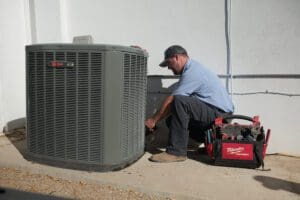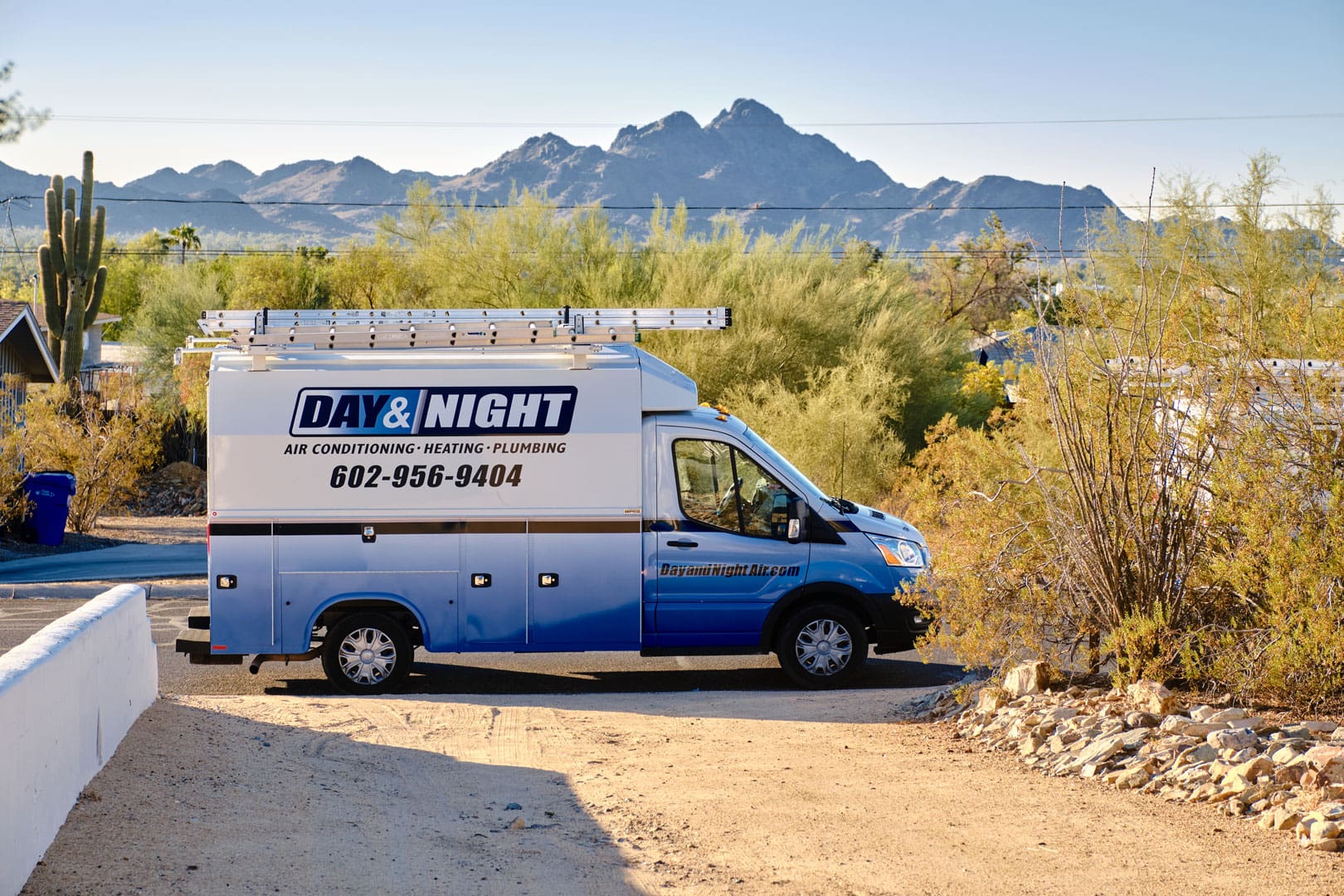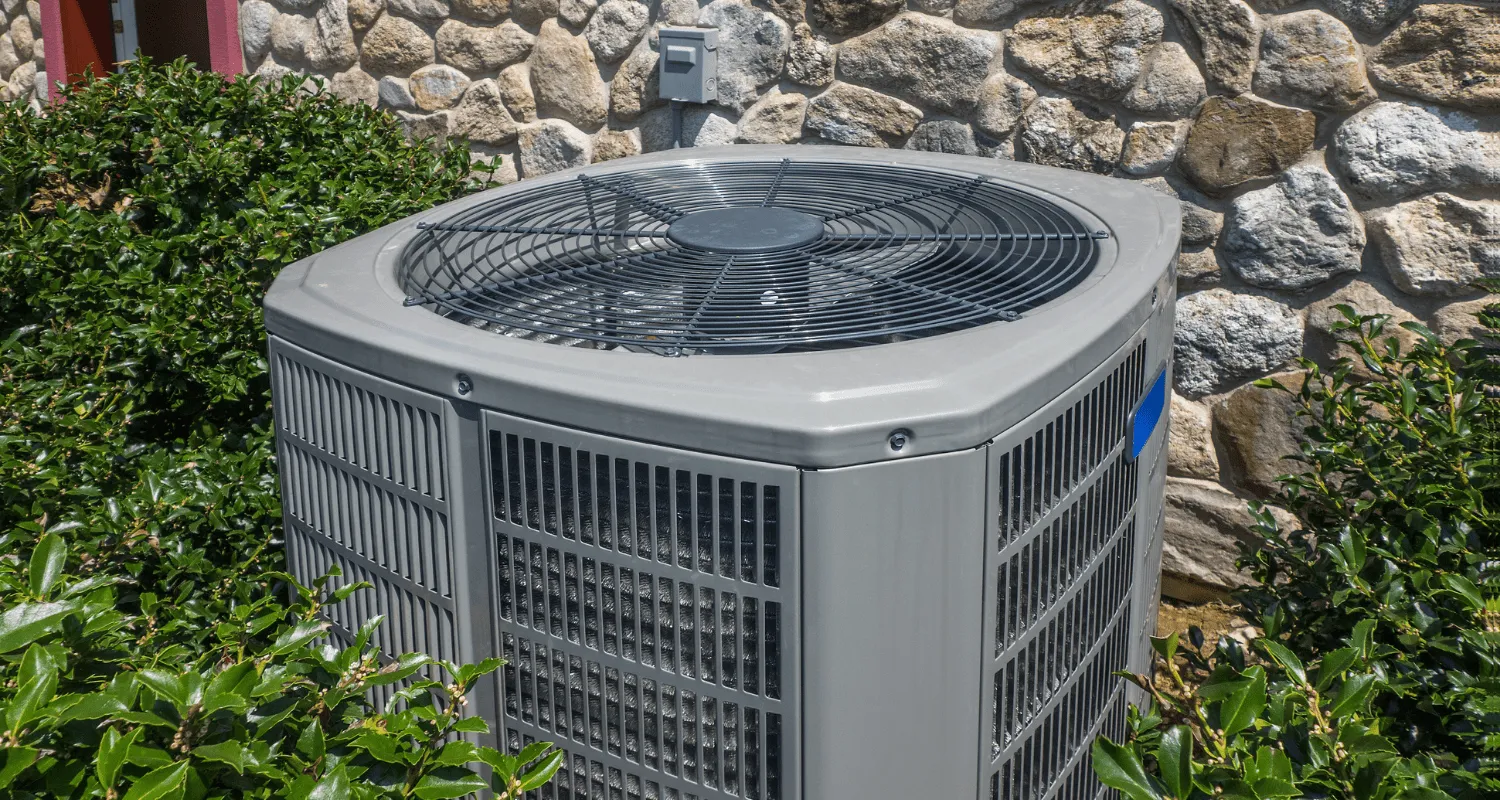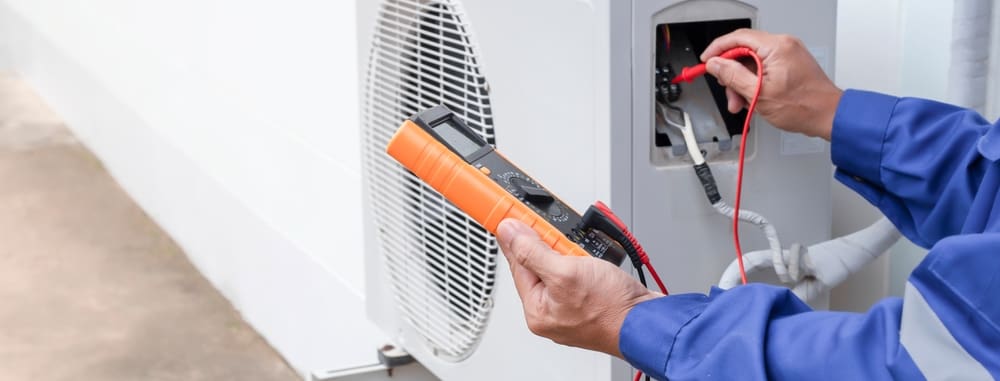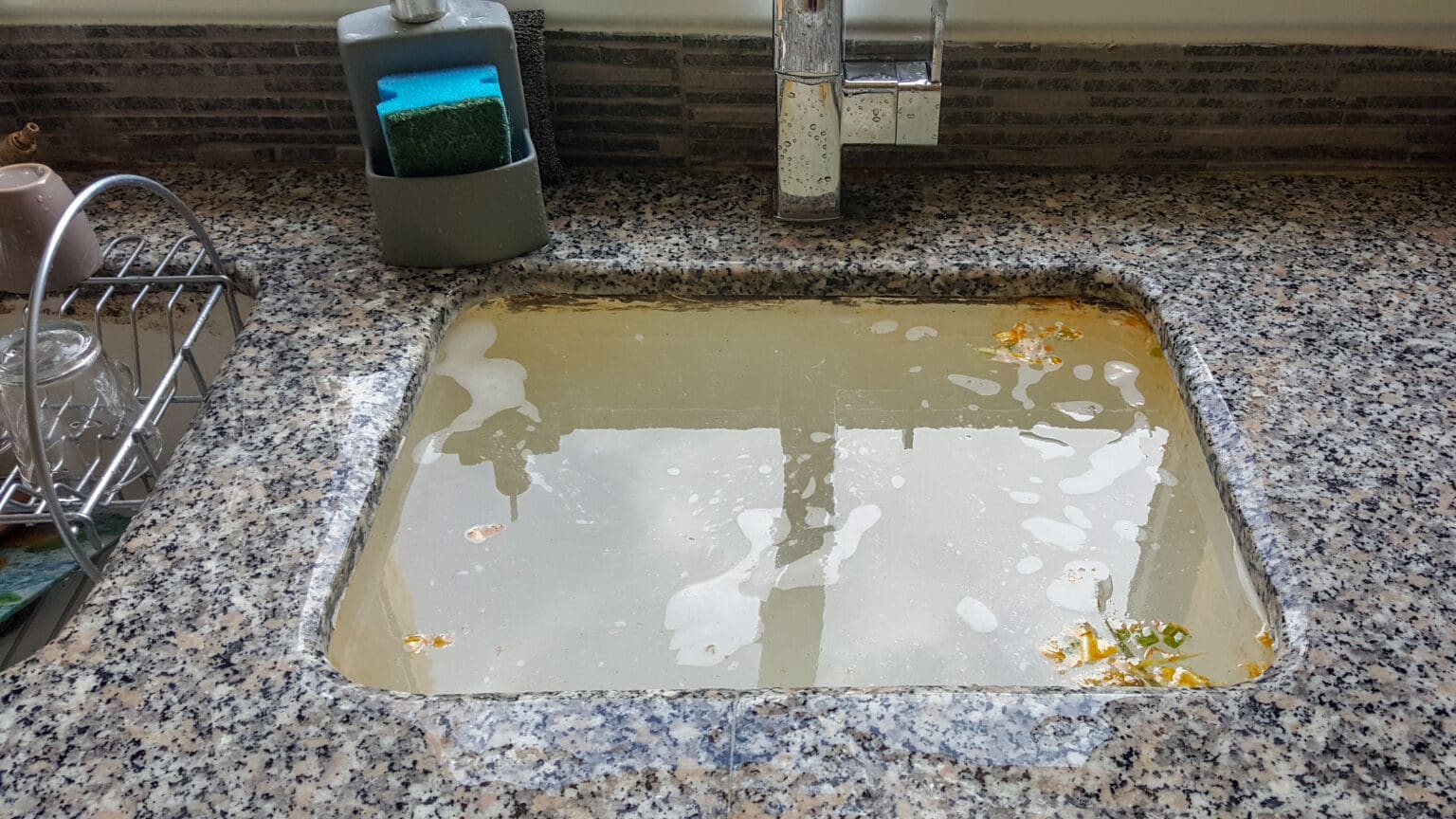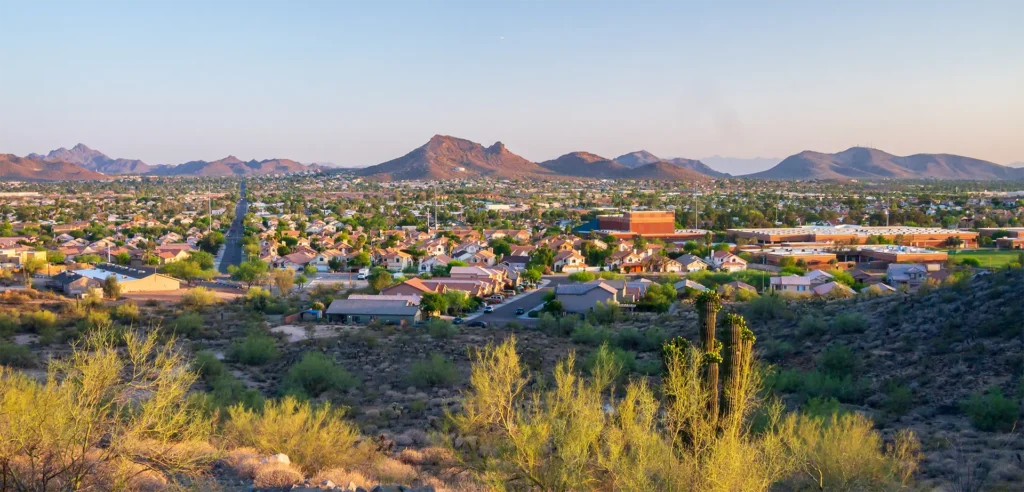The auxiliary heat setting on an HVAC unit usually turns on when you need heat fast. If this secondary heating system is constantly running, it may mean that the weather outside is very cold or that the thermostat is set higher than normal. It’s also possible that a part of the heat pump is malfunctioning.
If you suspect auxiliary heat troubles, our HVAC Professionals near you in Arizona can help you get to the bottom of this mystery quickly. Every situation is unique, but secondary heating systems operate in a similar way for most heat pumps and HVAC systems in Phoenix.
On This Page:
Is It Bad if Auxiliary Heat Comes On?
Signs That AUX Heat Isn’t Working Correctly
Tips for Avoiding AUX Heat Issues
Call Arizona’s #1 Pros for Heat Pump Repair and Installation
Table of Contents
What Does Auxiliary Heat Mean?
The auxiliary heat setting on your furnace is for a secondary heat source (usually gas or electric) that will come on when there has been a sudden temperature drop in your home. The auxiliary heating feature is helpful for homes in cool areas. It allows the heating system to reach the desired temperature quickly. In northern parts of the U.S., auxiliary heating is often a mainstay of wintertime. In Arizona, the temperature doesn’t usually drop that much, but cold weather can still show up unexpectedly.
One of the biggest advantages of having a heat pump is that it delivers excellent temperature control for a fraction of the energy cost of other options. During warm weather, the HVAC system uses a reverse cycle to cool rooms instead. This keeps your family comfortable no matter what the weather is like outside.
However, all heat pumps have one small weakness: speed. These pumps can take a while to get to the target temperature. That’s where auxiliary heat comes in. It’s a type of backup system that uses electricity to supplement heating when needed. Usually, auxiliary heat and the main heat pump work together to keep your electricity bill as low as possible. Should you worry if the secondary heat seems to run a lot?
Is It Bad if Auxiliary Heat Comes On?
Usually, it is not a bad thing if the auxiliary heat on your furnace comes on. There are many times when it’s perfectly normal for your auxiliary heat secondary heating system to run. Here are a few reasons why auxiliary heating can turn on:
You Increase the Thermostat Temperature By at Least Three Degrees
It’s normal for auxiliary heat to turn on when your heat pump needs to heat the home quickly. If you’re feeling chilly in the morning, for example, the secondary heat system can help to warm you up. This system turns on automatically, so don’t be surprised if it comes on during the night.
If one of your family members likes to keep the thermostat above 70 degrees in the morning, then your auxiliary heat may turn on a lot. It all depends on the average outside temperatures in the part of Arizona where you live. When the secondary heating system seems to run too much, your first action should be to check the thermostat. Someone may have set the temperature too high, and the HVAC unit is simply trying to reach it.
It’s Colder Than 35 Degrees Fahrenheit
When outside temperatures drop close to freezing, it can be hard for heat pumps to keep up. Cold weather means HVAC systems need a little push from secondary heating, so auxiliary heat turns on. In areas of the United States that get a lot of snow, it’s common for auxiliary heating to run all winter long.
This situation isn’t very common in Arizona, but colder-than-normal weather can sometimes happen. If the secondary heating system is running when it’s really cold outside, you probably have nothing to worry about. However, temperatures of 50–60 degrees shouldn’t require auxiliary heat in a correctly functioning HVAC system.
The Heat Pump is Defrosting
Modern heat pumps have sensors that can tell when something isn’t working right. For example, if ice builds up around the condenser coils, the HVAC system can detect it. This causes the unit to go into defrost mode. During this cycle, hot air from inside the home is routed to the coil to melt the snow or ice.
Some heat pumps let you know this is happening with small indicator light. Usually, a defrost cycle only lasts a few minutes. While defrosting, the HVAC unit switches to backup heat to keep your home warm. This issue happens a lot in areas where ice and snow are common during the winter, but in Phoenix, it’s not usually a problem.
The Emergency Heat Setting is Engaged
We often get asked ‘Does the emergency heat on my furnace come on automatically?’ The answer to this is typically not. Some HVAC units have a toggle switch for emergency heat. This switch allows homeowners to turn on auxiliary heat manually as an emergency source of heat. However, it’s important to understand that this setting turns off the heat pump completely. In other words, it only uses the secondary electrical or gas system for heating. That can make energy costs add up quickly.
If curious children accidentally turn on the emergency heating, this can cause the auxiliary heat to run constantly. In that case, all you need to do to solve the problem is move the switch back into the off position. Remember that emergency heat is only for short-term use. It’s not a good option for heating the home for extended periods of time.
How Our Team Can Help With Auxiliary Heat Problems
The first step we take is to give the HVAC unit a thorough inspection. We examine the wiring and make sure the heat pump is responding correctly to thermostat commands. Our team also checks the outdoor unit for wear and tear. Our diagnostic equipment can detect everything from worn sensors to faulty relays.
Next, we can take care of maintenance tasks to get the heat pump working properly again. If the problem is caused by an accumulation of debris, our team leaves everything like new. We can even spot refrigerant leaks and other serious issues that lead to bigger problems in the future. Our goal is to make sure everything is working in top condition.
Finally, we’re equipped to resolve problems on the spot. We usually carry replacement parts and everything else needed to handle auxiliary heat problems, performing HVAC repairs in Phoenix quickly and correctly. For example, if you’ve wanted to upgrade an older thermostat with a state-of-the-art smart model, we can take care of complete installation. Having experts near you with decades of experience installing HVAC components provides excellent results.
Signs That Auxiliary Heat Isn’t Working Correctly
Is your heat pump auxiliary heat always on? If so that’s a problem and it’s probably time to call a professional HVAC repair company near you. Here are a few warning signs that something is going wrong with the auxiliary heat on your heat pump:
- The electricity bill is much higher than normal: After several months with a new heat pump, you should have a fairly good idea of the average energy cost for the unit. If you notice a sudden spike in electricity consumption, it may mean that auxiliary heat is running too often or is perhaps always on. Of course, it’s also important to choose an HVAC system that’s the right size for your home to maximize your energy savings.
- Auxiliary heat is running, but it’s hot outside: Unless temperatures are 35 degrees Fahrenheit or below, it doesn’t make sense for AUX heat to run for a long time. With Arizona’s high temps, there usually isn’t much need for secondary heating. This can change in places where it gets cooler overnight, but even then, AUX heat shouldn’t turn on unless you increase the thermostat temperature by several degrees. If you notice your heat pump’s auxiliary heat is always on even in hot temperatures that’s a problem.
- Auxiliary heat doesn’t respond to thermostat changes: Turning your thermostat down to ambient temperature should cause auxiliary heat to turn off immediately. If you notice that secondary heating keeps going even if it’s warm inside or the thermostat is turned off, there’s probably something wrong.
- The home feels too warm: If you notice indoor temperatures over 80 degrees and the auxiliary heat is still running, there’s likely a problem. Check the thermostat to make sure it hasn’t been bumped. If not, ask Siri to help you find “heating services near me” for assistance.
- The HVAC system won’t switch to its cooling cycle: High-tech HVAC units can handle both heating and cooling. In the Phoenix area, your air-conditioner will generally spend most of the year in cooling mode. If the fan stops working or you just can’t get the AC to push cool air into the house, there may be a problem with an electrical connection or the thermostat.
- The defrost mode light stays on constantly: First, the heat pump shouldn’t even go into defrost mode unless the outside unit is covered in snow or ice. Second, the process should only take a few minutes. If you notice the heat pump defrosting for an extended period of time, call a pro right away.
If your heat pump’s auxiliary heat is always on or you see something else that seems like a problem, the easiest course of action is to give our team a quick call. We may need to replace a faulty sensor or check the thermostat.
Tips for Avoiding Auxiliary Heat Issues
The best way to prevent auxiliary heat problems is to take great care of the HVAC unit. If you want to know how to stop your auxiliary heat from coming on unnecessarily, proper maintenance of your furnace is the best way to do this. This includes auxiliary heating system components. Here’s how you can avoid auxiliary heating issues, follow these simple tips to keep everything working correctly:
- Schedule preventative maintenance every six months.
- Clean the areas around the outdoor HVAC unit regularly.
- Keep ducts and heat vents free of clutter.
- Don’t use the emergency heating setting for normal heating.
- Clean or replace the heat pump filter every month or two.
- Consider scheduling a Phoenix furnace tune-up to save yourself money on costly repairs in the long run. The average Phoenix furnace tune up cost is a small price to pay for peace of mind and a well-cared-for furnace.
If you notice any issues with the heat pump, it’s better to call a pro sooner rather than later. Sometimes poor original installation or damaged wiring is to blame. This can cause the secondary heat to turn on at the wrong time. If the home’s thermostat is malfunctioning, it can cause a lot of different problems with HVAC performance.
Call Arizona’s #1 Pros for Heat Pump Repair and Installation
At Day & Night Air, we know that HVAC issues can seem intimidating. That’s why we’re always available to help out and get your heat pump working correctly again. Our friendly team offers reliable heat pump repair services in Scottsdale, AZ and is ready to answer your questions and offer suggestions. We take care of everything, so you don’t need to worry about a thing. Contact us right away!

